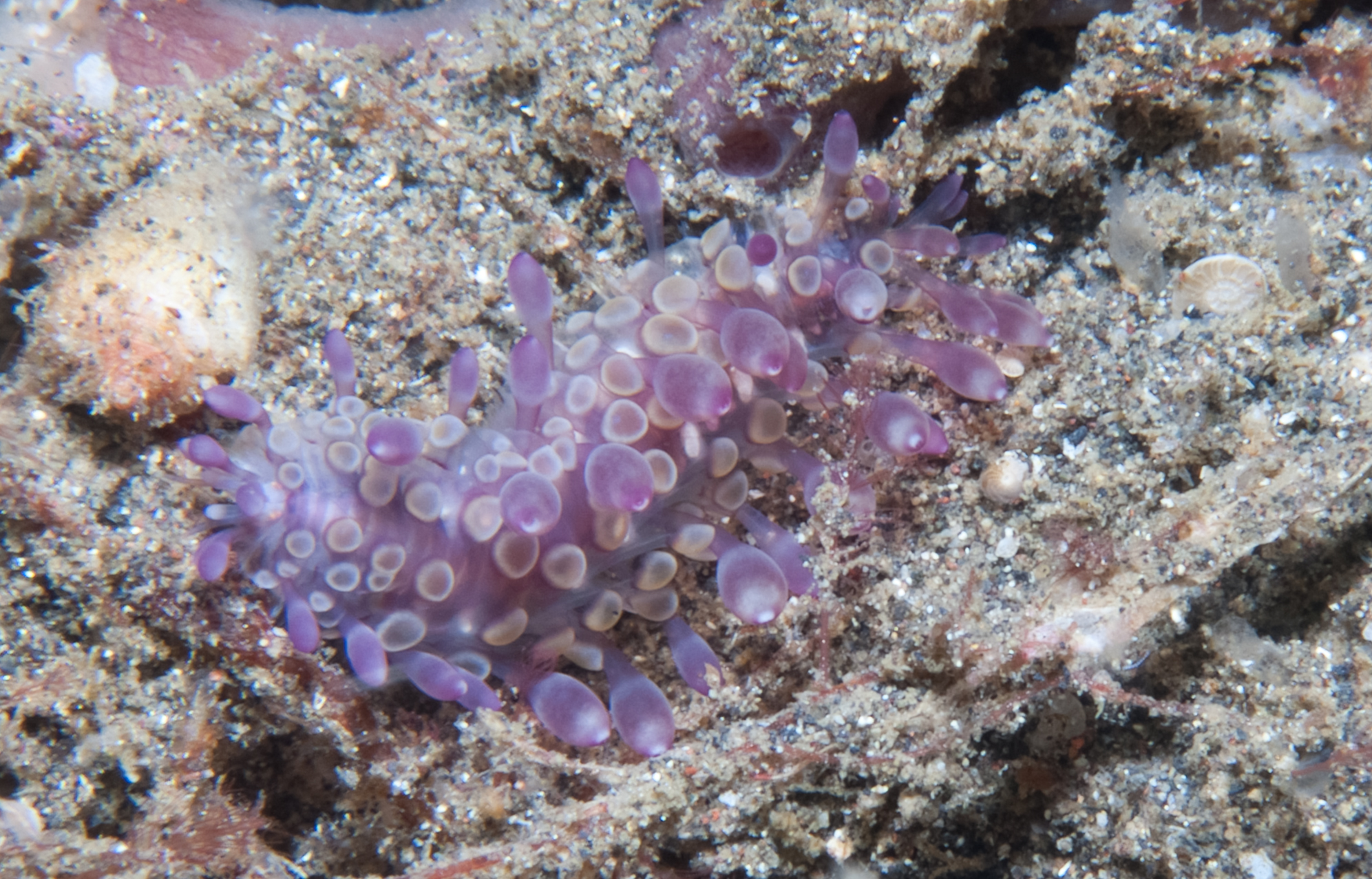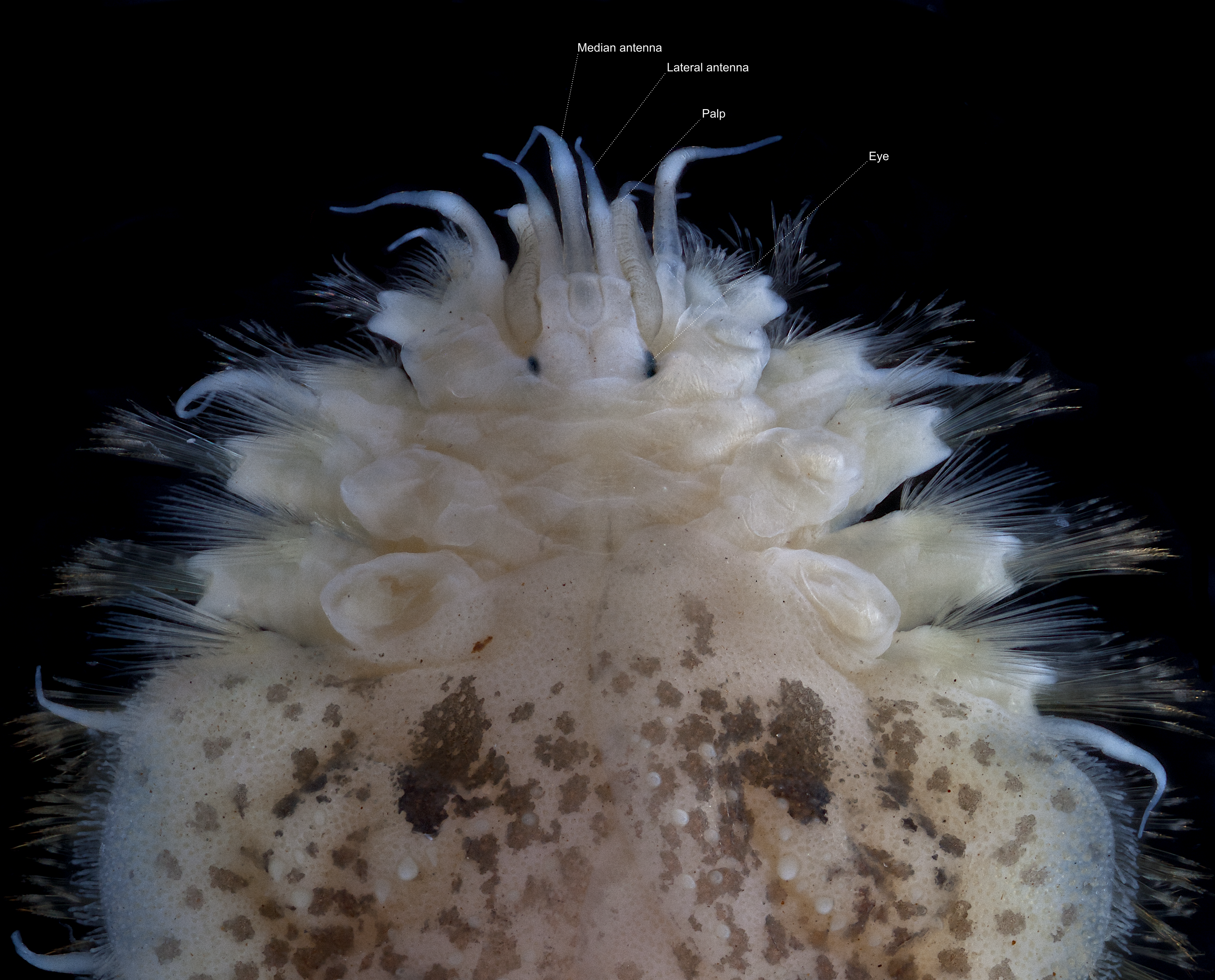|
Neopolynoe Paradoxa
''Neopolynoe paradoxa'' is a scale worm known from the North Atlantic Ocean around Norway at depths of about 70 to 1000 m.Anon ot Storm, V.1888. Direktionens Aarsberetning for 1887. Det Kongelige Norske videnskabers selskabs skrifter 886 -1887 77-90Loshamn A-A (1981) Descriptions of five polynoid species (Polychaeta) from the coasts of Norway and Sweden, including three new species, one new genus and one new generic name. Zoologica Scripta 10: 5–13. https://doi.org/10.1111/j.1463–6409.1981.tb00480.x Description ''Neopolynoe paradoxa'' has up to 60 segments with 15 pairs of elytra that bear marginal fringe of papillae. Lateral antennae are positioned ventrally on the prostomium, directly beneath the median antenna ceratophore and almost obscured in dorsal view. The notochaetae are distinctly thicker than the neurochaetae and only possess simple tips. Biology ''Neopolynoe paradoxa'' has a commensal relationship with host coral Corals are marine invertebrates within t ... [...More Info...] [...Related Items...] OR: [Wikipedia] [Google] [Baidu] |
Polynoidae
Polynoidae is a family of marine Polychaete worms known as "scale worms" due to the scale-like elytra on the dorsal surface. Almost 900 species are currently recognised belonging to 9 subfamilies and 167 genera. They are active hunters, but generally dwell in protected environments such as under stones. The group is widely distributed from shallow intertidal waters to hadal trenches. They are the most diverse group of polychaetes in terms of genus number and second most diverse in terms of species number which is almost 8% of all segmented worm species. Description Most Polynoidae species are short and flattened, but can reach as much as 20 cm in length and 10 cm width in ''Eulagisca gigantea'' and ''Eulagisca uschakovi''. Individuals are usually covered almost entirely by elytra, which can be shed and regenerated in many species. The elytra of some species are faintly bioluminescent, and leave glowing traces around the mouthparts of their predators, making those preda ... [...More Info...] [...Related Items...] OR: [Wikipedia] [Google] [Baidu] |
North Atlantic Ocean
The Atlantic Ocean is the second-largest of the world's five oceans, with an area of about . It covers approximately 20% of Earth's surface and about 29% of its water surface area. It is known to separate the "Old World" of Africa, Europe and Asia from the "New World" of the Americas in the European perception of the World. The Atlantic Ocean occupies an elongated, S-shaped basin extending longitudinally between Europe and Africa to the east, and North and South America to the west. As one component of the interconnected World Ocean, it is connected in the north to the Arctic Ocean, to the Pacific Ocean in the southwest, the Indian Ocean in the southeast, and the Southern Ocean in the south (other definitions describe the Atlantic as extending southward to Antarctica). The Atlantic Ocean is divided in two parts, by the Equatorial Counter Current, with the North(ern) Atlantic Ocean and the South(ern) Atlantic Ocean split at about 8°N. Scientific explorations of the Atlant ... [...More Info...] [...Related Items...] OR: [Wikipedia] [Google] [Baidu] |
Norway
Norway, officially the Kingdom of Norway, is a Nordic country in Northern Europe, the mainland territory of which comprises the western and northernmost portion of the Scandinavian Peninsula. The remote Arctic island of Jan Mayen and the archipelago of Svalbard also form part of Norway. Bouvet Island, located in the Subantarctic, is a dependency of Norway; it also lays claims to the Antarctic territories of Peter I Island and Queen Maud Land. The capital and largest city in Norway is Oslo. Norway has a total area of and had a population of 5,425,270 in January 2022. The country shares a long eastern border with Sweden at a length of . It is bordered by Finland and Russia to the northeast and the Skagerrak strait to the south, on the other side of which are Denmark and the United Kingdom. Norway has an extensive coastline, facing the North Atlantic Ocean and the Barents Sea. The maritime influence dominates Norway's climate, with mild lowland temperatures on the se ... [...More Info...] [...Related Items...] OR: [Wikipedia] [Google] [Baidu] |
Elytron (Annelida)
In annelids, elytra (; from Greek Greek may refer to: Greece Anything of, from, or related to Greece, a country in Southern Europe: *Greeks, an ethnic group. *Greek language, a branch of the Indo-European language family. **Proto-Greek language, the assumed last common ancestor ... ἔλυτρον "sheath, cover"; singular: elytron ) are shield-like scales that are attached dorsally, one pair on each of a number of alternating segments and entirely or partly cover the dorsum. Elytra are modified dorsal cirri, and their number, size, location, and ornamentation are important taxonomic characters. The basal part of the elytra is known as the elytrophore; if (as is often the case) elytra are lost their presence is indicated by the elytrophore which is still present and visible. Annelids possessing elytra are also known as "scale worms". Possession of elytra is characteristic of the annelid suborder Aphroditiformia. Gallery File:Eunoe leiotentaculata lower res.jpg, A '' Eunoe ... [...More Info...] [...Related Items...] OR: [Wikipedia] [Google] [Baidu] |
Prostomium
The prostomium (From Ancient Greek, meaning "before the mouth"; plural: prostomia; sometimes also called the "acron") is the cephalized first body segment in an annelid worm's body at the anterior end. It is in front of (but does not include) the mouth, being usually a small shelf- or lip-like extension over the dorsal side of the mouth. The prostomium together with the peristomium, which includes the mouth and pharynx, make up the annelid head. Description The prostomium is part of the head and holds at least part of the brain and often bears sensory structures such as the eyes, antennae and palps. It may function like a kind of overlip when the animal is feeding. The prostomium bears many important taxonomic characters and its shape and composition are important for annelid systematics. In addition to the eyes, antennae and palps, the prostomium can possess appendages such as tentacles or cirri. Moreover, some polychaete prostomia have a posterior extension or ridge with ... [...More Info...] [...Related Items...] OR: [Wikipedia] [Google] [Baidu] |
Chaeta
A chaeta or cheta (from Greek χαίτη “crest, mane, flowing hair"; plural: chaetae) is a chitinous bristle or seta found in annelid worms, (although the term is also frequently used to describe similar structures in other invertebrates such as arthropods). Polychaete annelids, ('polychaeta' literally meaning "many bristles") are named for their chaetae. In Polychaeta, chaetae are found as bundles on the parapodia, paired appendages on the side of the body. The chaetae are epidermal extracellular structures, and clearly visible in most polychaetes. They are probably the best studied structures in these animals. Use in taxonomy and identification The ultrastructure of chaetae is fundamentally similar for all taxa but there is vast diversity in chaetal morphology. Moreover, chaetae bear precise characters for determination of species and taxonomic assessment. The shape, absolute and relative size, number, position, ornamentation and type are important taxonomic characters a ... [...More Info...] [...Related Items...] OR: [Wikipedia] [Google] [Baidu] |
Commensal
Commensalism is a long-term biological interaction (symbiosis) in which members of one species gain benefits while those of the other species neither benefit nor are harmed. This is in contrast with mutualism, in which both organisms benefit from each other; amensalism, where one is harmed while the other is unaffected; parasitism, where one is harmed and the other benefits, and parasitoidism, which is similar to parasitism but the parasitoid has a free-living state and instead of just harming its host, it eventually ends up killing it. The commensal (the species that benefits from the association) may obtain nutrients, shelter, support, or locomotion from the host species, which is substantially unaffected. The commensal relation is often between a larger host and a smaller commensal; the host organism is unmodified, whereas the commensal species may show great structural adaptation consistent with its habits, as in the remoras that ride attached to sharks and other fishes. Remo ... [...More Info...] [...Related Items...] OR: [Wikipedia] [Google] [Baidu] |
Coral
Corals are marine invertebrates within the class Anthozoa of the phylum Cnidaria. They typically form compact colonies of many identical individual polyps. Coral species include the important reef builders that inhabit tropical oceans and secrete calcium carbonate to form a hard skeleton. A coral "group" is a colony of very many genetically identical polyps. Each polyp is a sac-like animal typically only a few millimeters in diameter and a few centimeters in height. A set of tentacles surround a central mouth opening. Each polyp excretes an exoskeleton near the base. Over many generations, the colony thus creates a skeleton characteristic of the species which can measure up to several meters in size. Individual colonies grow by asexual reproduction of polyps. Corals also breed sexually by spawning: polyps of the same species release gametes simultaneously overnight, often around a full moon. Fertilized eggs form planulae, a mobile early form of the coral polyp which, when m ... [...More Info...] [...Related Items...] OR: [Wikipedia] [Google] [Baidu] |






